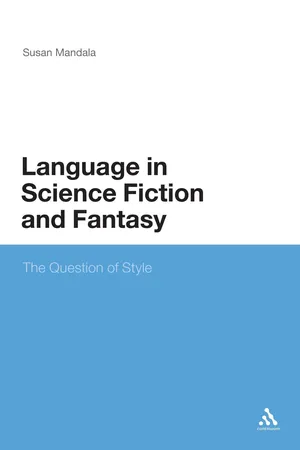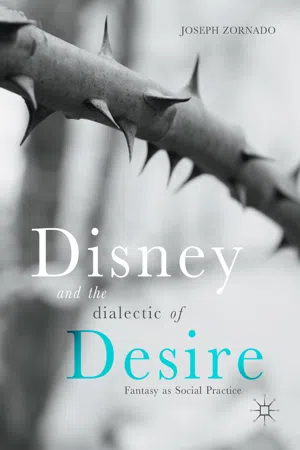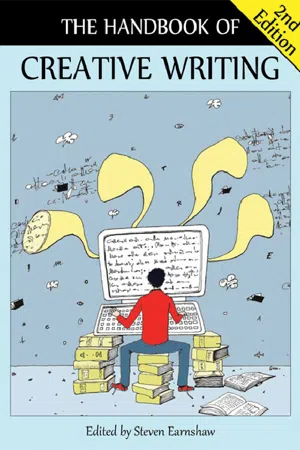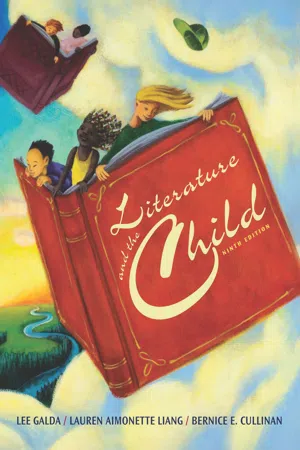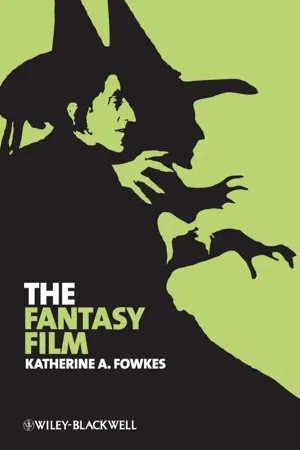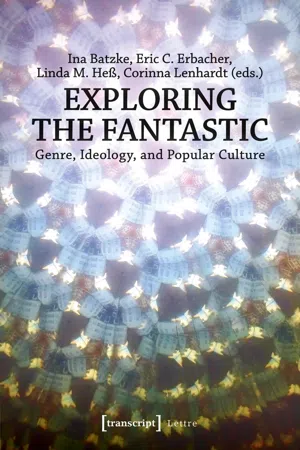Literature
Fantasy Fiction
Fantasy fiction is a genre that features imaginative and often supernatural elements, such as magic, mythical creatures, and otherworldly settings. It typically involves epic quests, battles between good and evil, and the exploration of complex moral and ethical themes. This genre allows authors to create rich, immersive worlds that captivate readers with their creativity and escapism.
Written by Perlego with AI-assistance
Related key terms
1 of 5
10 Key excerpts on "Fantasy Fiction"
- eBook - ePub
Reading Between the Lines
A Christian Guide to Literature
- Gene Edward Veith Jr.(Author)
- 2013(Publication Date)
- Crossway(Publisher)
E I G H T
FANTASY: Literature as a Lamp
J ust as there is a literature of imitation, there is a literature of creation. Fairy tales, allegorical visions, beast fables, medieval romances, Gothic tales, supernatural thrillers, epic quests in a sub-created uni verse, and science fiction constitute an important literary tradition. Such works have always been popular, firing the imaginations of their readers with tales of wonder and mystery that transcend everyday life.Fantasy draws upon the inward imagination rather than external reality for its subject matter. The play of the creative imagination is an important human power. The pure, radical fictionality of fantasy—its separateness from what we already experience—is part of its value. Nevertheless, the lamp of fantasy can shed light on the world outside its pages.Christians have always been drawn to fantasy. The great pioneers of fantasy—Spenser, Bunyan, Swift, MacDonald, Tolkien, Lewis were all devout Christians, as are many authors and avid readers of fantasy today. On the other hand, some Christians decry unrealistic lit erature. Mythological tales of magic spells and demonic villains seem to them dangerously close to the occult. Yet even the critics of fantasy can hardly deny that in the hands of a John Bunyan or a C. S. Lewis, fantasy has been a way of exploring and proclaiming the Christian faith.Fantasy, by projecting the inner life and by symbolizing the intan gible, will by its very nature raise spiritual issues. The battle between good and evil, the inner struggles of the mind, the contest between God and Satan for the soul—such momentous truths are in the realm of the unseen, but fantasy can express them in symbolic form. Something spiritual may be evil or it may be good. Fantasy’s spiritual orientation means that it can embody the occult and promote immorality, or it can embody Christianity and promote virtue. Most fantasy—the great fan tasy—comes down on the side of Christianity. - eBook - PDF
- Brian Baker(Author)
- 2017(Publication Date)
- Red Globe Press(Publisher)
A rationally extrapolated genre where imaginary worlds and realities are creatively constructed in order to explore abstract concepts. These are all reasonable definitions. They tend to contain elements that emphasise science or reason; the imagination; alternative worlds or soci- eties; and a definite relationship between the imagined world and ‘our’ own, the world that produced it. The definition in the seventh edition of the Oxford English Dictionary (OED) indicates a kind of value-judgement in its very opening word: ‘fanciful fiction based on postulated scientific dis- coveries or environmental changes, frequently dealing with space travel, life on other planets, etc.’. ‘Fanciful’ rather than ‘imaginative’ appears rather dismissive. It relies upon conceptions of some kind of imagined 7 other world, and also upon a library of images of science fiction sub-genres in that ‘etc.’: a definition that implies that we already know what it is. We know science fiction when we see it, the OED implies. Even if it does not contain spaceships, aliens from other planets, time travel, ray guns, the future. Damon Knight, writer and anthologist, indicated the problem of defining SF when he declared that it is ‘not one thing but many ... a science fiction story always postulates a world changed in some way from the world we know, but these changes are of many dif- ferent kinds and are made for different ends’ (Knight, 1977, p. x). In a recent critical book on the genre, Science Fiction: A Very Short Introduction (2011), David Seed begins by writing: Science fiction has proved notoriously difficult to define. It has vari- ously been explained as a combination of romance, science, and proph- ecy (Hugo Gernsback), ‘realistic speculation about future events’ (Robert Heinlein), and a genre based on an imagined alternative to the reader’s environment (Darko Suvin). It has been called a form of fantastic fiction and an historical literature. - eBook - PDF
The Language in Science Fiction and Fantasy
The Question of Style
- Susan Mandala(Author)
- 2010(Publication Date)
- Continuum(Publisher)
Fantasy, as Wolfe (2002: 27) points out, is now nearly all pervasive, ‘infiltrating other genres, the literary mainstream, otherwise conventional movies and TV programs, com-mercial art and advertising, music, theatre, design’ (27). Stockwell (2003a) makes the same point for science fiction, noting that it ‘informs the film and literature, the advertising and music, the street furniture and product design, food, fashion and language of global culture’ (197). The critical work on science and fiction and fantasy that has been progressing since the early 1960s has, in large part, made the re-evaluation of these genres from laughable to laudable possible by overturning many of the questionable assumptions that had accrued around them. It has been argued in several places, for example, that science fiction and fantasy are not to be dismissed as juvenile and escapist fluff. Drawing on Tolkien’s arguments (1947/1964), Hunt (in Hunt and Lenz 2001/2004: 7) and Swinfen (1984: 54, 76) both note 10 Language in Science Fiction and Fantasy that fantasy is not, in fact, easy to write, but hard: in order to create compelling and convincing other worlds, insightful observations of the world as it is are necessary. It has also been shown that neither genre can depend on the shared reader-writer context often taken for granted in realist narratives (Attebery 1992: 132). In fantasy, ‘there is no comfortable matrix of the commonplace to substitute for the imagination’ (Le Guin 1989/1993: 3), and the writer cannot ‘count on his reader’s easy familiarity with what he is talking about’ (Carter 1973: 175). Stockwell (2003b: 266) puts forward much the same case for science fiction, observing that a setting such as London in a realist novel can be sketched mostly in outline, as readers can be confidently left to fill in ‘much of the rich detail’ on their own. - eBook - PDF
Books and Beyond
The Greenwood Encyclopedia of New American Reading [4 volumes]
- Kenneth Womack(Author)
- 2008(Publication Date)
- Greenwood(Publisher)
Such stories are made possible by a modern, scientific image of the world and of humanity’s limited place within it. A more troubling set of issues arises when science fiction is compared to the modern fantasy genre. Fantasy is notable for its depiction of gods, demons, and other super- natural beings; rationally inexplicable events; or the effective operation of magic in some form. Its plots and character types tend to draw on those found in myth, legend, fairy tale, and romance. Yet, though initially seemingly paradoxical, science fiction and fantasy share an extensively overlapping audience and often exert a similar appeal. To resolve the paradox, we must acknowledge that the contrast is not absolute, that there are certain similarities, as well as differences, between these genres. Importantly, the work of modern fantasy writers, such as J.R.R. Tolkien or David Eddings, much resembles science fiction in its detailed portrayal of imaginary societies, and sometimes of entire worlds. Moreover, fantasy narratives can display a kind of rationality: the operation of magical forces and methods may be internally consistent within the narrative, not unlike the body of self-consistent natural laws postulated by science. There is a sense that problems are being solved within a set of “rules.” Conversely, science fiction’s deference to real science can be quite arbitrary, and the fictional science it describes can appear magical. As a result, much of what is marketed as science fiction could be understood as a kind of fantasy with technological trappings. Science fiction and modern fantasy are not simply equivalent, and science fiction is not merely a variety of fantasy. However, where the emphasis is on extraordinary adventures in exotic societies, magic and superscience are approximately equivalent. - eBook - PDF
Disney and the Dialectic of Desire
Fantasy as Social Practice
- Joseph Zornado(Author)
- 2017(Publication Date)
- Palgrave Macmillan(Publisher)
From ancient Greek mythology (and the Greek language where the word fantasy first emerges in the historical record) to the Judeo/ Islamic/Christian tradition of “the book,” to Sir Gawain, Chaucer, Shakespeare, the Brothers Grimm, and from Wonderland to Oz to Middle Earth, from Hogwarts to Game of Thrones, broadly conceived the meta-language of fantasy takes the form of epic mythologies. “Fantasy,” Le Guin maintains, “is at least as immense as realism and much older — essentially coeval with literature itself.” Why then was fantasy “relegated to the nursery,” as she contends, or dismissed as unwelcome offspring emerging from the nursery, as Edmund Wilson does of Tolkien’s work when he describes it as “overgrown fairy stories”? Proponents of literary fantasy like Ursula Le Guin maintain that fantasy offers access to insights to the human condition more effectively than any realism could possibly achieve. Le Guin calls writers of fantasy “the realists of a larger reality” 6 J. ZORNADO (2014), 3 while its detractors dismiss it as juvenile and unworthy. Yet, if fantasy is coeval with literature itself, as Le Guin contends, then perhaps the dismissal of fantasy by “serious” scholars should be understood as an attempt to repress that which stands for the essentially fantastical nature of reality. Fantasy is the scapegoat by which defenders of realism deny and disavow an anxiety of influence and a fear of recognition. According to the Oxford English Dictionary, the signifier “fantasy” has its roots in late Greek in the form of three variant definitions that emerged: φαντασία, a making visible; φαντάζειν, to make visible; and φαίνειν, to show. - eBook - PDF
- Steven Earnshaw(Author)
- 2014(Publication Date)
- Edinburgh University Press(Publisher)
12 Writing Science Fiction and Fantasy Crawford Kilian Science fiction and fantasy seem unlikely partners. SF, after all, is about what could happen, given what we currently know about the universe. Fantasy is about what could never happen, because science has shown it to be impossible. But science itself uses fantasy to make its points, and fantasy tries to work out its own implications in a consistent manner. Science imagines elevators that fall forever, and spaceships that display clocks running slower and slower as the ships near the speed of light. Fantasy imagines the logical consequences of a spell, and the ecological niche of dragons. These are all ‘thought experiments’, ways of using fantasy to look at the world and ourselves outside the limits of ordinary experience. Whether you write SF or fantasy, you are conducting such a thought experiment: could a human love a robot, and could the robot requite that love? If magic worked, what would it cost? In both genres, you are really exploring the human mind under conditions that reveal something new – or something old, familiar and ingrained that we have taken for granted until you make us look at it again. Just as some rocks and flowers reveal unexpected colours under ultraviolet light, human nature looks different in the light of a distant star, or of a sorcerer’s glowing staff. In this chapter I want to throw some light on the similarities of the two genres as well as their differences. This will involve their history, their conventions, and their future. But mine is just one writer’s view; I hope that your own vision of your genre will be far more imaginative and original than mine. Origins of Science Fiction and Fantasy Fantasy arises from myth, folk tale, and fairy story. It began as an effort to personify the mys-terious forces that rule our world: lightning, rain, sunlight, ice, and earthquake. - eBook - PDF
- Lee Galda, , Lauren Liang, Bernice Cullinan, Lee Galda, Lauren Liang, Bernice Cullinan(Authors)
- 2016(Publication Date)
- Cengage Learning EMEA(Publisher)
Sometimes these stories are so steeped in ancient tales that it’s difficult to remember that they are, indeed, not folk-lore, but created by the imagination of an author. Humor, however, does not mean that a book is not deeply serious, as Kate DiCamillo and other writers have taught us. The essential element that distin-guishes “high” fantasy is “the search for meaning in life” that the story depicts, that “selective distort[ion] of reality in pursuit of truth” (Barron, 2012, p. 89). The fantastic element may be as simple as ani-mals that act like humans (or superheroes) or as complex as fully developed worlds that reflect real life with a significant twist, but they all allow read-ers to think about how the world works. Fantasy writers, playfully and seriously, use such devices as fully developed fantastic settings, nonhuman char-acters, and magic or magic realism to create fantasy. The metaphorical nature of fantasy allows young readers to consider ideas about things such as love and loss, prejudice, death, war, the consequences of beauty, heroism, pride, greed, and other serious Teaching Idea 7.2 EXPLORING GRAPHIC NOVEL SHORT STORIES This Teaching Idea addresses Common Core English Language Arts, Reading: Literature standard 9 for grades 4 through 8. The suggestions in this Teaching Idea may need to be adapted to suit your particular grade level and the needs of your students. The following are some examples of approaches you might want to pursue in using The Hidden Doors as a vehicle for discussing fantasy. ● Because each of the stories in The Hidden Doors features a door, ask small groups of students to compare and contrast how each author/artist chooses to address this element. - eBook - PDF
- Katherine A. Fowkes(Author)
- 2010(Publication Date)
- Wiley-Blackwell(Publisher)
As Todorov acknowledges, however, many stories mix and blend these three modes. The most expansive definition of literary fantasy argues that fantasy and mimesis (the imitation of reality) are diametrically opposed impulses that form the basis of all literature. Rather than trying to establish a separate fantasy genre, Kathryn Hume argues that a longstanding preference for and focus on mimesis has caused critics to denigrate and overlook the fantasy elements that pervade every type of literature. Realistic represen-tations of the world are considered paramount, and so art that deviates from realism has traditionally been devalued. While scholars have invoked Plato’s cave parable to explore the nature of cinematic illusion, Hume traces the disdain for fantasy directly to Plato, who distrusted poetry and all types of fantasy. Aristotle also ranked realism highly and claimed that all literature should be appraised according to how probable it seemed (Hume, 6). Hume explores a number of strands in the fantasy tradition, and concludes that fantasy is in no way less important than the mimetic perspective. The value of Hume’s position lies in the A BRIEF CRITICAL OVERVIEW 41 acknowledgement that what we choose to call fantasy is a question of degree and not of kind. Just as fantasy, science fiction, or horror fall along a continuum, so do realist and fantasy elements. Fantasy has the potential to challenge the status quo since it can explore what would otherwise be repressed, and so it is not surprising that psychological analyses of the genre are common. In Fantasy: The Literature of Subversion , Rosemary Jackson focuses on the many fantastic and Gothic texts that inform Todorov’s work, seeing the fantastic as being particu-larly open to a psychological reading because of its connection to fantasy as a mental process. - eBook - PDF
Exploring the Fantastic
Genre, Ideology, and Popular Culture
- Ina Batzke, Eric C. Erbacher, Linda M. Heß, Corinna Lenhardt, Ina Batzke, Eric C. Erbacher, Linda M. Heß, Corinna Lenhardt(Authors)
- 2018(Publication Date)
- transcript Verlag(Publisher)
Indeed, does not explanation require rationality? If it does, how can we place Fairy Tale and Science Fiction in the same category (as sub-genres)? Todorov does not speak of Fantasy. However, it is this genre that fits his def-inition of “the marvelous.” It works especially well for “immersive fantasy,” since, according to Mendlesohn, there “the implied reader, although dependent on the pro-tagonist’s absorption of sight and sounds, is not required to accept his or her narra-tive” (2008: 1). Compare with Todorov: “In the case of the marvelous, supernatural events provoke no particular reaction … in the implicit reader. It is not attitude to-wards the events described which characterize the marvelous, but the nature of these events” (1975 [1970]: 54). 78 | I RINA G OLOVACHEVA horizon of critical evaluation of the genres of fantastika would be lost for us for-ever. Freedman suggests defining Science Fiction as “a recognizable kind of fic-tion” (2000: 16). But again, the idea of recognizability can be applied to the im-ageries in the Gothic Horror, Fantasy, and Fairy Tale. “The fantastic” in Gothic Horror and in such weird tales as Edgar Allan Poe’s “The Fall of the House of Usher” (1839) and “Ligeia” (1838) is recognizable but non-cognizable: the strange (the uncanny) almost never gets a rationalistic explanation. In the best Gothic or weird texts, the reader never ceases being puzzled. It is the persisting strangeness that accumulates the effect of horror or terror. Such oddity brings about astonishment that cannot be relieved by rationalistic cognition leading to catharsis and then, possibly, to the state of “zero amazement” (acceptance of the new reality). As for the strangeness found in non-generic, modern, and postmod-ern fiction, it is much less recognizable, and for this reason we should identify it as fantastic element, or “passing fantasy.” 6. - eBook - PDF
- S. Keen(Author)
- 2003(Publication Date)
- Palgrave Macmillan(Publisher)
Fictional worlds, according to Pavel, are as various as fictional practices, and they include ‘salient’ worlds with no corresponding references to verifiable existents in the actual world. Fictionality thus encompasses fictional worlds that pretend to be repre- sentations of the real world and fictional worlds that make highly improba- ble, even impossible, truth claims. Some definitions of narrative fiction hinge on the presence of truth claims, though it is usually recognized that these truth claims are imbued with a high degree of indeterminacy, as Sidney noted when he said that the poet is not a liar, because he affirms nothing about the real (brazen) world. Michael Riffaterre writes in Fictional Truth that, ‘Fiction is a genre whereas lies are not’ and ‘A novel always con- tains signs whose function is to remind readers that the tale they are being told is imaginary’ (Fictional Truth, 1). (The objection that some early fictions and a minority of contemporary narrative fictions present them- selves in the guise of the nonfiction genres I take up in Chapter 10.) The invitation to understand a narrative’s claims as imaginary initiates world- Fictional Worlds and Fictionality 119 making: as Wolfgang Iser suggests, it invites the creation of an ‘As If’ world. That world may resemble the actual world or not. Realistic fiction asserts its reflection of the actual world in a way that may render its fictionality trans- parent, but realistic narratives rely on the reader’s capacity to generate a sense of wholeness and actuality out of a finite set of references, the reader’s world-making. Realistic fictions are as separate from the everyday world of a reader as the most flagrant make-believe. Wolfgang Iser argues that the reader’s consciousness of a gap between actual and fictional worlds is instigated by the existence of the imaginary.
Index pages curate the most relevant extracts from our library of academic textbooks. They’ve been created using an in-house natural language model (NLM), each adding context and meaning to key research topics.


